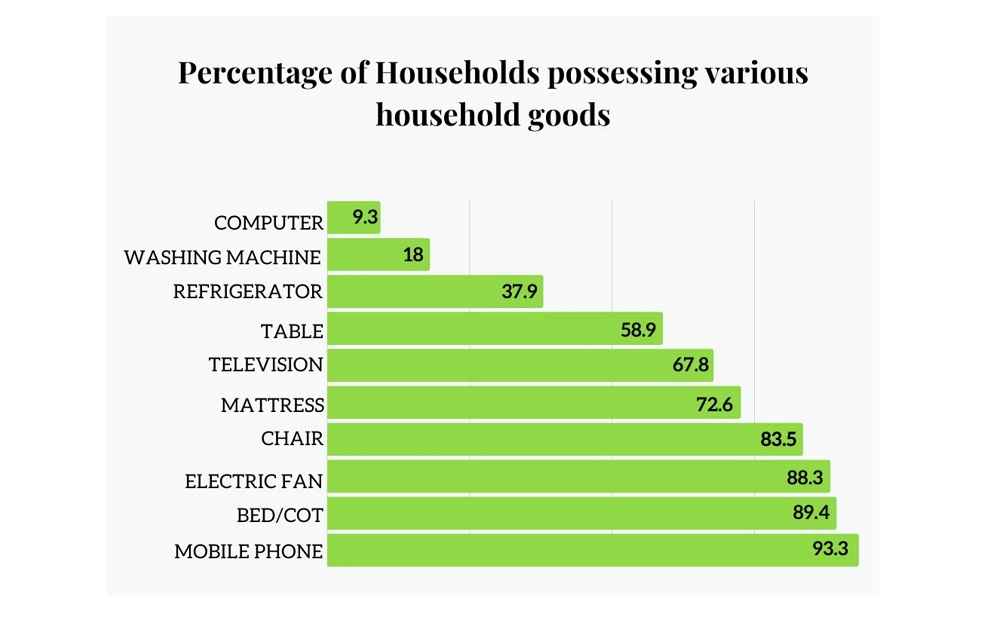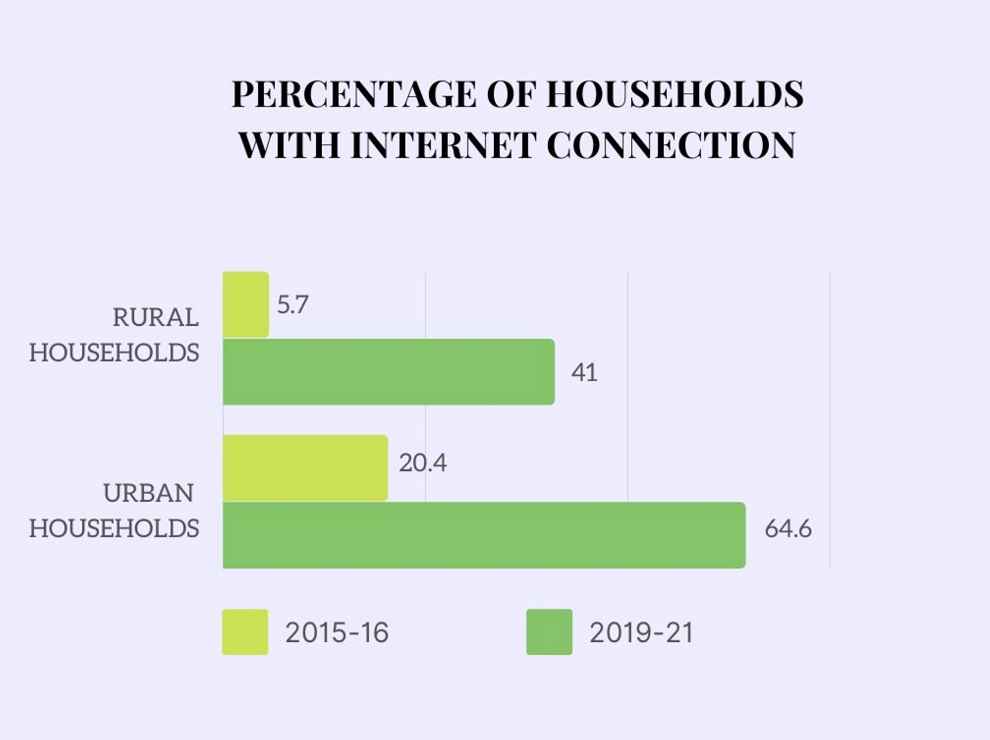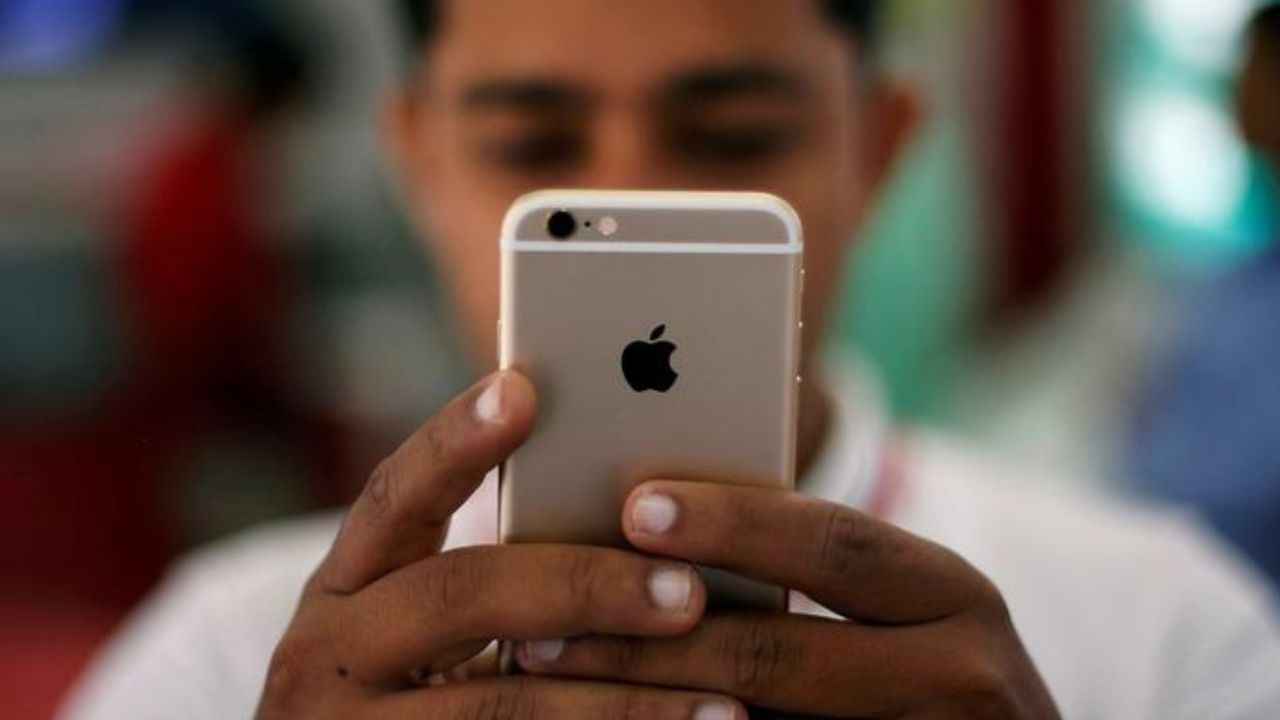Across India’s rural-urban divide, most households own a mobile phone and yet the digital gap persists, reveals the latest data of National Family Health Survey 5 (2019-2021).
 Survey
Survey
✅ Thank you for completing the survey!
According to the survey, 96.7% of urban households and 91.5% of rural households possess a mobile phone.
Interestingly, mobile phones are the most-possessed household item in India. In fact, believe it or not, Indians are more likely to have a mobile phone in their homes than a table, chair, bed or mattress.
In the list of the most possessed household items, a bed (or cot) comes close second (89.4%), followed by electric fan (88.3%), chair (83.5%), watch/clock (77.2%), and a mattress (72.6%).
Computers, washing machines, refrigerators, and coolers still remain outside the reach of the majority of Indians. 9.3% of Indian households own a computer, 18% a washing machine, and 37.9% a refrigerator.
The low figures for costlier items should not be surprising, as only 10% of Indians earn more than Rs 25,000 a month, as per ‘The State of Inequality in India’ report released by the Institute of Competitiveness.

Digital Gap
Though mobile phones have travelled far and wide through India, the Internet has still got miles to go.
The survey shows that only 64.6% of urban households have an Internet connection. For the rural households, the figure is as low as 41%.
What’s remarkable about the survey numbers is just the prevalence of the digital divide among Indians across the subcontinent. It goes without saying that the digital chasm that separates the privileged from the deprived leads to unfair disadvantages skewed heavily towards the poor when it comes to access to education and digital opportunities. It should be noted, however, that access to the internet has been improving over the last five years.
When the survey was conducted in 2015-16, only 5.7% of rural households had internet access, as opposed to 20.4% of urban households.


Anup Semwal writes at the intersection of technology and society. He is currently pursuing Convergent Journalism from AJK Mass Communication Research Centre, Jamia Millia Islamia View Full Profile



